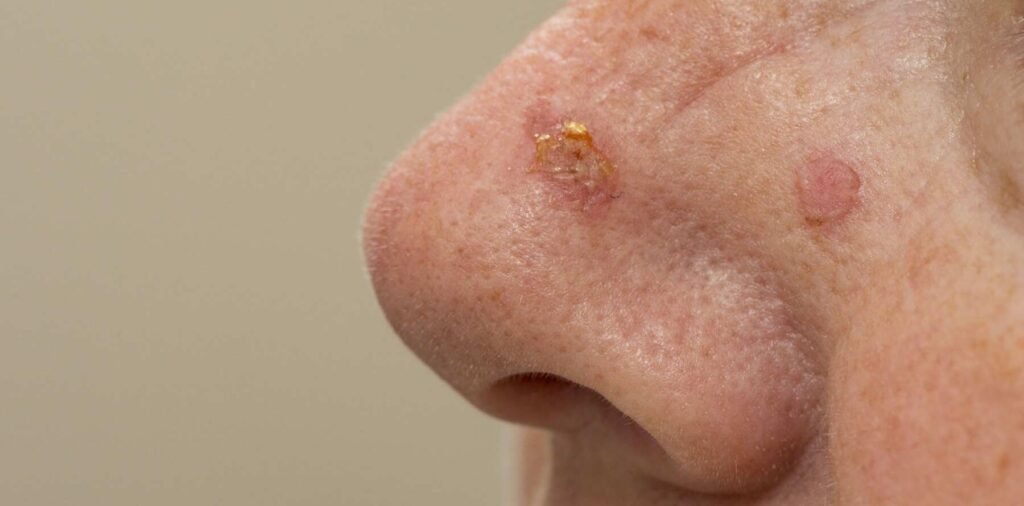Actinic Keratosis Treatment

Understanding Actinic Keratosis: Causes, Symptoms, and Treatment
Actinic keratosis (AK), commonly referred to as a precancerous skin condition, manifests as flaky spots or patches on the skin, primarily due to prolonged exposure to ultraviolet (UV) rays. These patches can appear as single bumps or multiple keratoses, which are small, rough areas that can develop over time.
What Does Actinic Keratosis Look Like?
Actinic keratosis typically presents as rough, scaly patches on the skin, usually no larger than an inch in diameter. These patches can vary in color, appearing tan, white, pink, or even the same color as your skin, but they often turn red as they progress. AK usually first appears in individuals around the age of 40, taking several years to develop.
Common Locations for Actinic Keratosis
AK can occur in various areas of the body, particularly those frequently exposed to the sun, including:
- Back of the neck
- Hands
- Forearms
- Shoulders
- Scalp
- Face
- Lips
- Ears
- Eyelids
What Causes Actinic Keratosis?
The primary cause of actinic keratosis is long-term exposure to UV rays from the sun or tanning beds. Several factors can increase your susceptibility to developing AK, including:
- Age: Individuals over 40 are at a higher risk.
- Sun Exposure: Frequent sun exposure or a history of sunburns can contribute to the development of AK.
- Geographical Location: Living in sunny regions increases the likelihood of UV exposure.
- Skin Type: People with light-colored hair or eyes are more prone to AK.
- Medical History: A history of skin cancer or previous actinic keratosis increases risk.
- Immune System: A weakened immune system due to certain conditions or treatments can elevate the risk of developing AK.
Symptoms of Actinic Keratosis
Actinic keratosis can be precancerous, meaning it has the potential to develop into skin cancer if left untreated. Symptoms can range from mild to severe and may include:
- Rough, flaky spots on the skin, usually no larger than an inch.
- Slightly protruding bumps that may feel firm or wart-like.
- Itchiness or a burning sensation in the affected areas.
- Variations in color, with patches appearing tan, white, pink, or red.
Diagnosis and Treatment Options
If you suspect you have actinic keratosis, it is crucial to consult a dermatologist for an accurate diagnosis and appropriate treatment. Early detection is key to preventing the progression to skin cancer.
Treatment Options
Several effective treatments are available for actinic keratosis, including:
- Cryotherapy: This involves freezing the keratosis with liquid nitrogen, causing the abnormal skin cells to die and eventually fall off.
- Topical Medications: Prescription creams or gels can be applied directly to the affected areas to help eliminate the keratosis.
- Photodynamic Therapy: This treatment uses a photosensitizing agent and light to destroy abnormal skin cells.
- Laser Therapy: Laser treatments can effectively remove actinic keratosis by targeting the damaged skin.
- Surgical Removal: In some cases, surgical excision may be necessary to remove larger or more persistent lesions.
Schedule a Consultation
- Phone:
- For Appointments: +91 9322 122 111
- General Inquiries: +91 9323 133 222
- Website: Bliss Hair, Skin & Dental Clinic: https://blisskindental.com
- Social Media:
- Facebook: Bliss Hair, Skin & Dental Clinic Facebook Page: https://www.facebook.com/blisskindental
- Instagram: Bliss Hair, Skin & Dental Clinic Instagram: https://www.instagram.com/blisskindental/
- YouTube: Bliss Hair, Skin & Dental Clinic YouTube Channel: https://www.youtube.com/@blisskindentalpolyclinic4874
Location:
- Address: Bliss Hair, Skin & Dental Clinic, 6 Hilton Apartment, 35-A Hill Road, Bandra-50 AS, Opp Alco Shopping Centre, Mumbai – 400 050
- Google Maps: Bliss Hair, Skin & Dental Clinic on Google Maps: https://g.page/BestskinDermatologistinBandra?gm
You can even find us on :
- Bliss Hair, Skin & Dental Clinic on Justdial: https://www.justdial.com/Mumbai/Bliss-Skin-And-Dental-Polyclinic-Metropolis-Lab-Opposite-Elco-Shopping-Centre-Bandra-West/022PXX22-XX22-171014154721-E2I4_BZDET
- Bliss Hair, Skin & Dental Clinic on Practo: https://www.justdial.com/Mumbai/Bliss-Skin-And-Dental-Polyclinic-Metropolis-Lab-Opposite-Elco-Shopping-Centre-Bandra-West/022PXX22-XX22-171014154721-E2I4_BZDET
- Bliss Hair, Skin & Dental Clinic Featured on Top Rated: https://www.justdial.com/Mumbai/Bliss-Skin-And-Dental-Polyclinic-Metropolis-Lab-Opposite-Elco-Shopping-Centre-Bandra-West/022PXX22-XX22-171014154721-E2I4_BZDET
- Bliss Hair, Skin & Dental Clinic on Yappe: https://www.blissdentallv.com/
- Bliss Hair, Skin & Dental Clinic on Drlogy: https://blisskindental.com/

